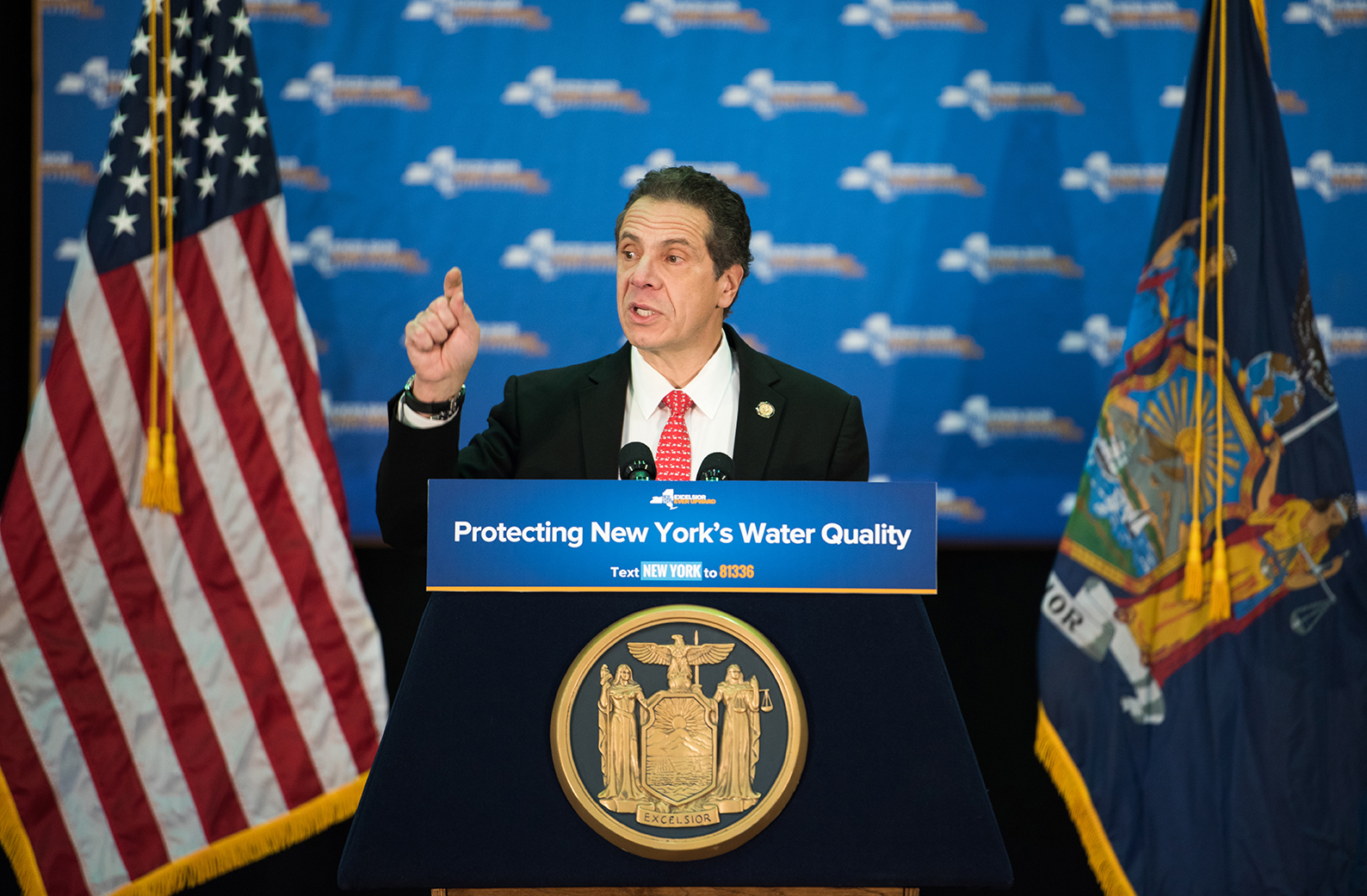 New York State Governor Andrew Cuomo came to SUNY New Paltz on Tuesday, Feb. 27, to kick off a new, $65 million initiative to protect New York’s lakes and waterbodies from harmful algal blooms.
New York State Governor Andrew Cuomo came to SUNY New Paltz on Tuesday, Feb. 27, to kick off a new, $65 million initiative to protect New York’s lakes and waterbodies from harmful algal blooms.
Governor Cuomo gave his remarks before an audience of state and local policy makers, researchers, conservationists and other experts, including a number of New Paltz students, faculty and staff, as an introduction to a summit on environmental health and water quality.
“Protecting New York’s water quality for future generations is our top priority, and we are working with local communities to address the growing threat of harmful algal blooms,” Cuomo said. “This summit brings together experts from across the country, the state and the Hudson Valley community to develop new and innovative strategies to safeguard our water for future generations.”
Cuomo first proposed this initiative in his 2017 State of the State address, where he emphasized these algal blooms’ potential to damage drinking water supplies and detract from upstate New York tourism.
The program begins with four regional harmful algal bloom summits, designed to inform the public and develop action plans to address the causes of algal blooms in these vulnerable lakes.
The first of these was held at SUNY New Paltz on Feb. 27, in the evening following Cuomo’s address. It focused on the four Hudson Valley lakes identified as most vulnerable to harmful algal blooms: Lake Carmel, Palmer Lake, Putnam Lake and the Monhagen Reservoir.
“This issue is so important to Ulster County, as it is to the whole state,” Governor Cuomo said. “This state started the environmental movement. It was birthed right here, on the banks of the Hudson River, where you had the first real mobilization of people putting the environment first.”
The Hudson Valley summit featured roughly two dozen experts on biology, environmental conservation and water science, including:
- Jennifer Graham, Research Hydrologist, United States Geological Survey
- Harold Walker, Co-Director, SUNY Stony Brook Center for Clean Water Technology
- Dave Matthews, Upstate Freshwater Institute
- Beth Ahner, Senior Associate Dean, Cornell College of Agriculture and Life Sciences
- Fran Dunwell, Hudson River Estuary Program
- Scott Kishbaugh, New York State Department of Environmental Conservation
- Bob Capowski, New York State Department of Environmental Conservation
- Lloyd Wilson, New York State Department of Health
More information about the Governor’s initiative to protect New York lakes from harmful algal blooms is

